|
Dictionary: Search the Dictionary Browse the Dictionary |
|
Timeline: Launch Interactive Timeline |
| Return to Front Page |
| GEMS | |
| Form: Gemmae | |
| The art of cutting precious stones was early learned by the Greeks from the Egyptians and Orientals, who had practised it from remote antiquity. The cuttings were originally only concave, and the gems set in rings and used as seals. Cameos, or stones carved in relief, first came into use, it would seem, in the time of Alexander the Great, and were used for ornament. For cameos precious stones of various colours were used, especially the onyx. The layers of the stone were so treated, that the figures stood out bright on a dark ground. Muesarchus of Samos, the father of the philosopher Pythagoras (about 600 B.C.) is the oldest Greek jeweller whose name has come down to us. In the 4th century B.C. the most celebrated master was Pyrgoteles, the only artist whom Alexander the Great would allow to cut his likeness. In the age of Augustus we hear of Dioscorides, who cut the emperor's likeness on a stone which was used as a seal by the succeeding Caesars. The Etruscans and Romans took up the art very early, but never attained the same perfection as the Greeks. The fancy for making collections of beautiful gems arose as early as the 1st century B.C. The intaglios, or cut stones, have come down to us in greater numbers than any Of the monuments of ancient art. Those which belonged to the advanced periods of style present examples of the most beautiful workmanship, the most original composition, and the most interesting subjects, the latter being mainly taken from mythology. Among the remaining Greek cameos an important place, both for size and beauty, must be given to the Gonzaga Cameo in St. Petersburg. This, it has been conjectured, represents the bust of Ptolemy Philadelphus and Arsinoe, his sister and wife; [but it more probably commemorates Nero and Agrippina, fig. 7.] The largest and most splendid of the cameos which have come down from the Roman period are those at Vienna (fig. 8) and Paris, representing, in groups and figures, the family of Augustus. Whole vessels were sometimes made of single stones, and adorned with reliefs An instance is the Mantuan vase now at Brunswick, 6 1/3 inches high, 2 1/3 inches thick, consisting of a single onyx. The lid, handle and base are of gold. Two parallel lines of gold divide the surface into three parts, the midmost of which has twelve figures, representing the festival of the Thesmophoria, in three groups; while the highest and lowest are adorned with leaves, flowers, ears of corn, fruits, bulls' heads, and other objects connected with the worship of Demeter. Works of this kind are sometimes made of coloured glasses. The most celebrated instance of this sort is the Portland Vase now in the British Museum. Its height is about 10 inches. The material is a dark blue transparent glass, with beautiful reliefs in white opaque enamel (fig. 9). [See Catalogue of Engraved Gems in the British Museum, 1888, pp. 225-8; and (on the subject in general) Introduction, pp. 1-38.] | |
|
|
|
| Pictures and Media | |
| ATHENE, BY ASPASIOS. (Red jasper, in Vienna Cabinet.) |
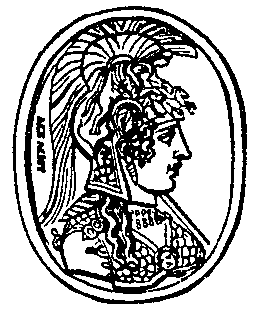
|
| THE "STROZZI" MEDUSA BY SOLON. (Chalcedony, in British Museum Cabinet, no. 1256.) |
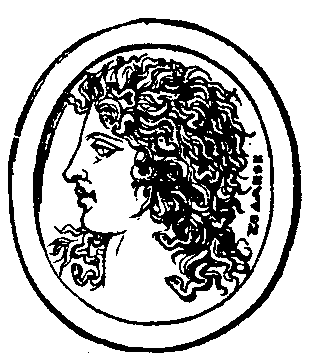
|
| ARTEMIS |
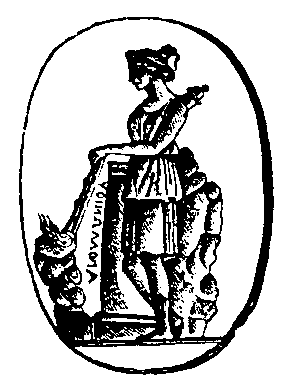
|
| PERAEUS GEMS FROM POMPEII. (Naples Museum.) |
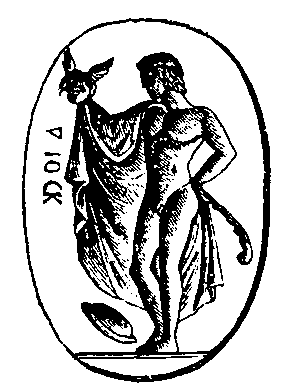
|
| DANCING SATYR |
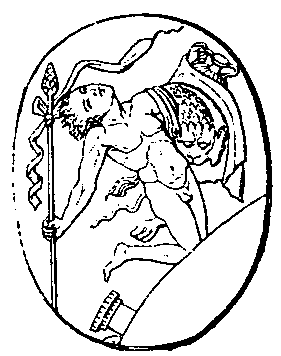
|
| SATYR WITH INFANT DIONYSUS. CAMEOS (Naples Museum.) |
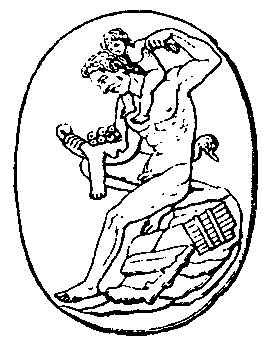
|
| THE "GONZAGA" CAMEO, NERO AND AGRIPPINA. (Sardonyx of 3 strata, 8 x 5 inches, Russian Imperial Cabinet.) |
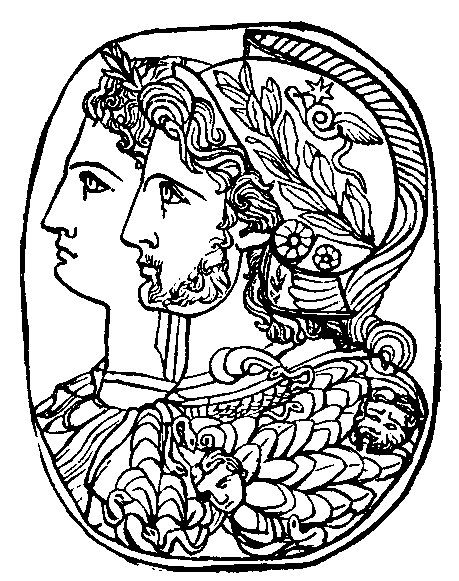
|
| THE GEMMA AUGUSTEA, AT VIENNA. (Augustus and Livia receiving Drasus and Tiberius on their return from their Vindelic and Rhaetian campaigns. (Sardonyx of 2 strata, 9 x 8 inches, Vienna cabinet.) |
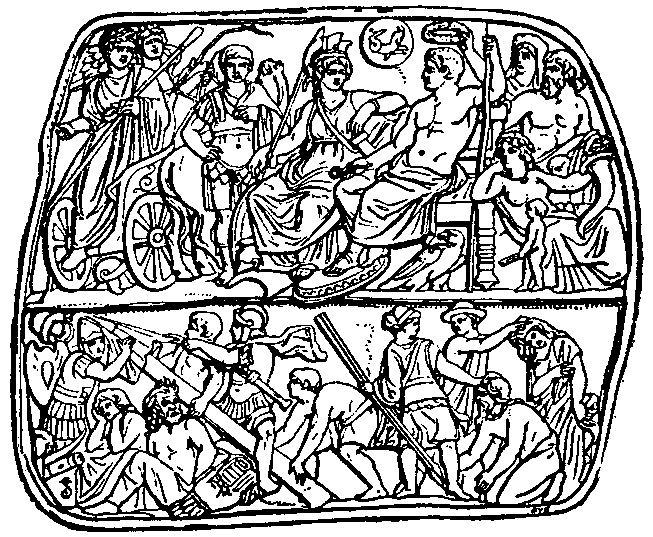
|
| THE PORTLAND VASE. (British Museum.) |
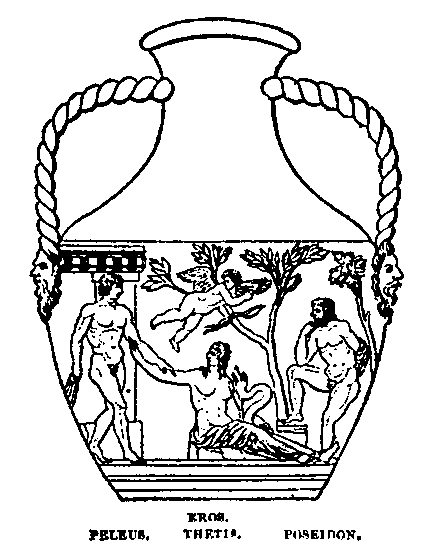
|
|
Copyright 2000-2020 Peter T. Struck. No portion of this site may be copied or reproduced, electronically or otherwise, without the expressed, written consent of the author. |